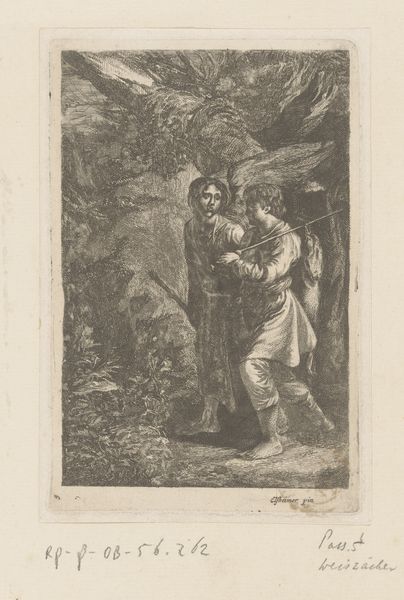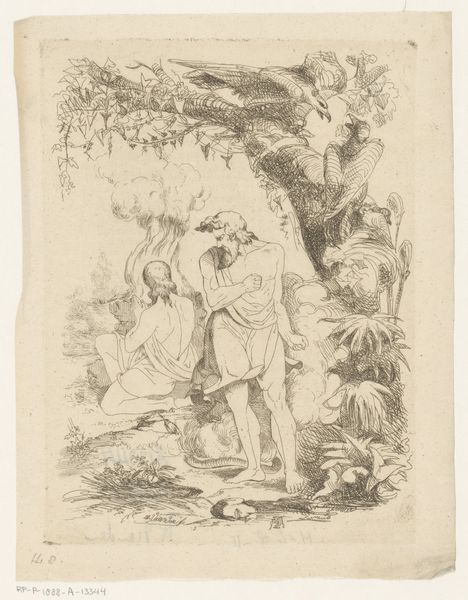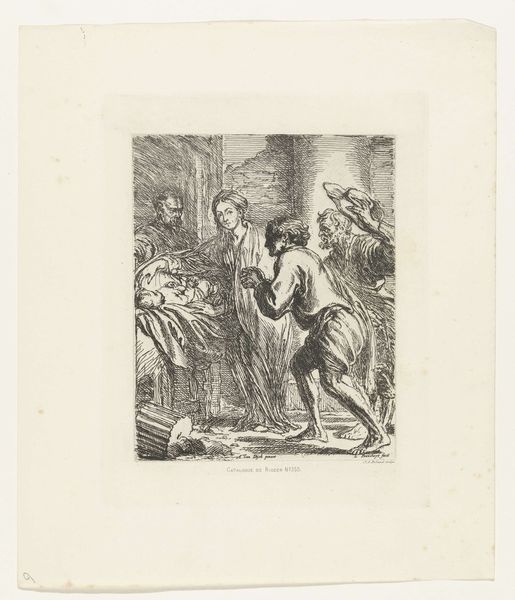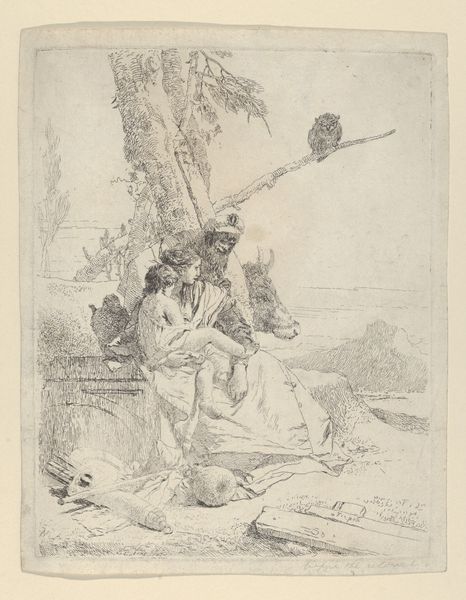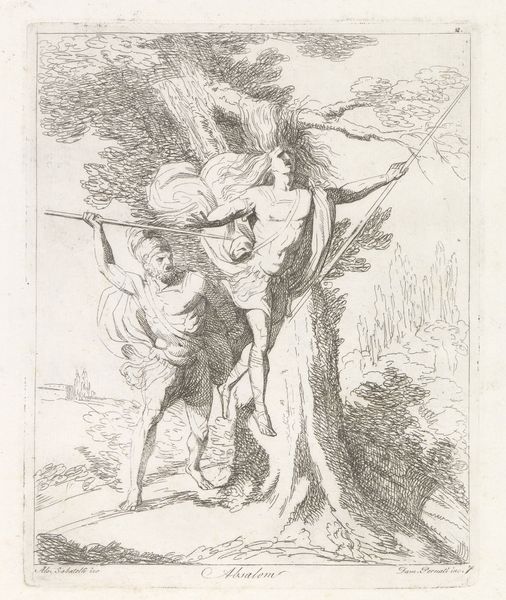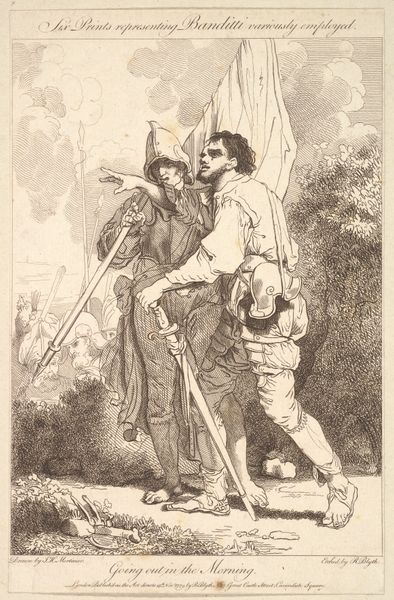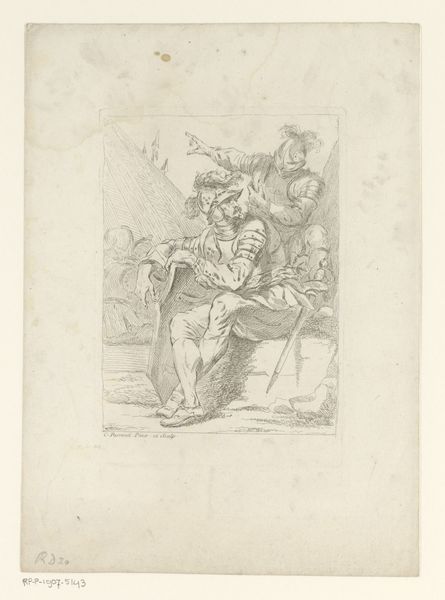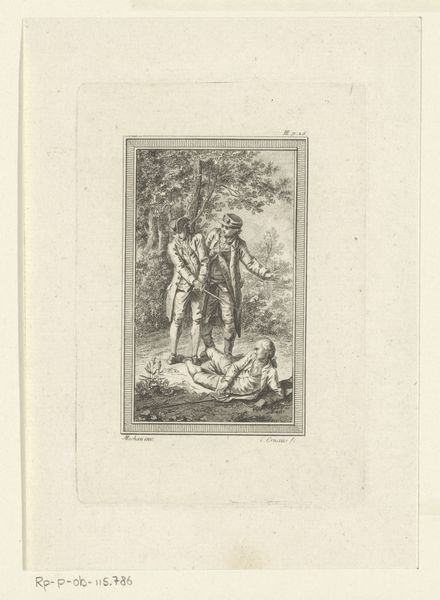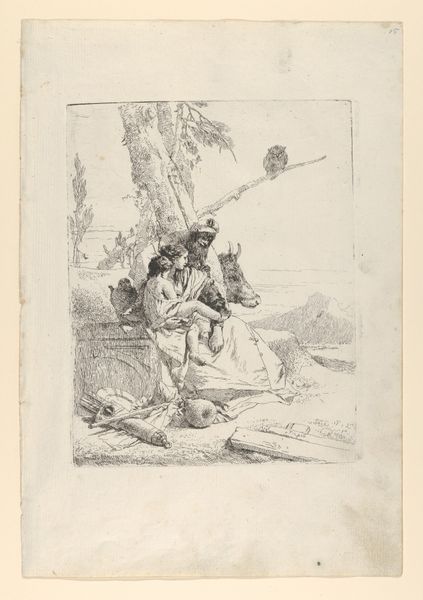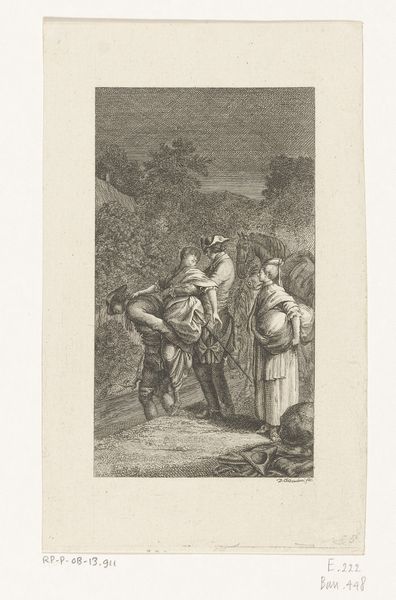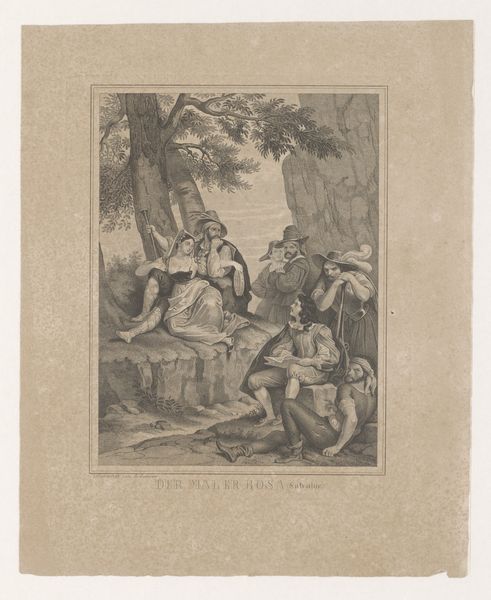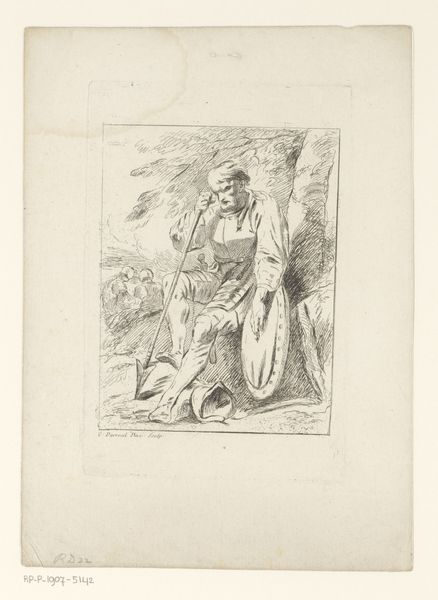
Dimensions: 299 × 200 mm (plate); 397 × 291 mm (sheet)
Copyright: Public Domain
Curator: This etching, titled "Banditti on the Lookout," was created by John Hamilton Mortimer in 1778. It's a wonderful example of narrative-driven figuration, wouldn't you say? Editor: Striking! The rawness of the lines, that almost frenetic energy… the figures emerge from the page, dangerous and immediate. What's the story here? Curator: Well, Mortimer was fascinated by the theme of the "picturesque" outlaw. He often explored these figures, romanticizing their supposed freedom while hinting at the social realities that might lead men to banditry. Remember that this print was made in England. Editor: That context is vital. Are we seeing a comment on social inequity disguised as romance? The materials here—etched lines on paper—become a medium for social commentary, reproduced for a potentially wide audience. It challenges the grand narratives of oil painting by being more easily reproduced and sold. Curator: Precisely. Mortimer produced these prints, likely intended for sale to a growing middle class eager for both entertainment and a hint of the transgressive. The etching process itself, a more democratic form of artmaking compared to painting, speaks to that accessibility. Consider, also, the market that was in play to absorb his prints—their relative affordability, distribution networks. Editor: You can really sense the energy of production. And the performative aspect of "Banditti" interests me. They are "on the lookout," which suggests the public eye even within the bandit's supposed hideout, while there's theatrical staging as they're posed, sword on guard! It looks like a staged tableau, like a performance for us, the viewers. Curator: Indeed! The "Banditti" served a public role. These kinds of images engaged directly with the art market. So what appears at first as merely historical subject matter becomes an entry point into considering 18th-century printmaking and its socio-economic dimensions. Editor: Mortimer has done a great job portraying an idea as well. The choice of materials speaks volumes, reflecting social dynamics beyond just artistic representation. This artwork shows how intertwined artistic expression, materials, and broader social realities truly are. Curator: Yes, seeing it through that lens has opened my eyes to its broader cultural impact. Thank you.
Comments
No comments
Be the first to comment and join the conversation on the ultimate creative platform.
